PEOPLE OF IDEAS

THE RENAISSANCE AND REFORMATION
(1400 to Mid-1600s)
By Alphabetical Order:
A
An Admonition
to the
Arminius,
Jakob
Avila,
Teresa
of
B
Bacon,
Francis
Baxter,
Richard
Bellarmine,
Robert
Beza,
Theodore
Böhme,
Jacob
Bosch,
Hieronymous
Brahe,
Tycho
Bucer (Butzer),
Martin
Bunyan,
John
Bullinger,
Heinrich
Buonarroti,
Michelangelo
C
Calvin,
John
Cartwright,
Thomas
Castiglione,
Baldassare
Catherine
of Genoa
Cervantes
Saavedra,
Cocceius,
Johannes
Coke,
Edward
Contarini,
Gasparo
Copernicus,
Nicolas
Council of:
Cranmer,
Thomas
Cromwell,
Oliver
Cusa,
Nicholas
of
D
Dort, Synod of
(1625)
E
Erasmus,
Desiderius
F
Flavel,
John
Foxe,
John
G
Galileo Galilei
Gilbert,
William
H
Harvey,
William
Henry
"the
Navigator" (Prince)
Hooker,
Richard
Huss,
John
(Jan)
I
Ignatius de Loyola
J
Jansen,
Cornelius
John of the
Cross |
K
Karlstadt,
Andreas
Rudolf
à
Kempis,
Thomas
Kepler,
Johannes
Knox,
John
L
Lefevre,
Jacques
Leonardoda
Vinci
Luther,
Martin
M
Machiavelli,
Niccolo
Mather,Increase
Mather,
Richard
Melanchthon,
Philip
Michelangelo
Buonarroti
Montaigne,
Michel
de
More,
Thomas
Müntzer,
Thomas
N
Navarrete,
Pedro
Fernandez
O
Oecolampadius
P
Pascal,
Blaise
Paul III
(Pope)
Perkins,
William
R
Reuchlin,
Johannes
S
Savonarola,
Girolamo
Simmons,
Menno
T
Teresa of Avila
U
Usher, James
V
Valla,
Lorenzo
Vesalius,
Andrea
da Vinci,
Leonardo
W
The Westminster
Wilkins,
John
Wycliff,
John
X
Ximines de Cineros
Z
Zwingli,
Ulrich |
By Historical Subject
Area:
 Italian
Humanists Italian
Humanists
 Northern
European Humanism Northern
European Humanism
 The
Rise of Modern Science The
Rise of Modern Science
 Renaissance
Mysticism Renaissance
Mysticism
 Astronomy
Dethrones the Earth – and the Astronomy
Dethrones the Earth – and the
Heavens
 Early
Efforts at Reform of the Church (1350 to Early
Efforts at Reform of the Church (1350 to
1500)
 The
First Generation of Protestant Reformers The
First Generation of Protestant Reformers
 The
Next Generation of Reformers The
Next Generation of Reformers
 Other
Early Reformers Other
Early Reformers
 The
Catholic Counter-Reformation (1540 to The
Catholic Counter-Reformation (1540 to
1600)
 Puritan
Reform in England (Mid 1500s Puritan
Reform in England (Mid 1500s
Onward)
 The
Development of Continental The
Development of Continental
Protestantism (Mid-1500s Onward)
 Continuing
Catholic Pietism and Mysticism Continuing
Catholic Pietism and Mysticism
(Mid-1500s Onward)
 The
Abiding Secular Mood The
Abiding Secular Mood
 The Renaissance
and Reformation: A Full The Renaissance
and Reformation: A Full
History
|
ITALIAN HUMANISTS
(1400 to early 1500s) |
NORTHERN EUROPEAN HUMANISTS
(Late 1400s to Early 1500s) |
RENAISSANCE MYSTICISM
(1400 to Early 1500s) |
Thomas
à Kempis (1380-1471)
A later "Modern Devotionalist"
who lived a fully monastic life near Zwolle, immersed in conservative piety.
 Kempis'
major works or writings: Kempis'
major works or writings:
The Imitation
of Christ the most widely circulated devotional book
of the times.
Catherine
of Genoa (1447-1510)
 Catherine
of Genoa's major works or writings: Catherine
of Genoa's major works or writings:
Oratory of
Divine Love
Hieronymous
Bosch (1450-1516)
A graphic artist who was moved
deeply by an "apocalyptic" mood – and by what today we would call the "occult." |
|
THE RISE OF MODERN SCIENCE
(Mid-1400s to Early 1600s) |

Prince
Henry ("the Navigator") of Portugal (1394-1460)
In 1419 Prince Henry of Portugal
established at Sagres a school with a library and observatory to study
the earth in support of his love of overseas exploration. He gathered
at Sagres scholars from all around Europe to improve his maps – and general
knowledge of the earth's geography (such as was available to early 15th
century Europe).
Andrea
Vesalius (1514-1564)
 Vesalius'
major works or writings: Vesalius'
major works or writings:
Concerning
the Fabric of the Human Body (1543)
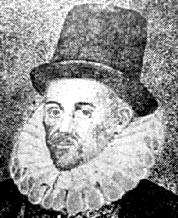
William
Gilbert (1540-1603)
 Gilbert's
major works or writings: Gilbert's
major works or writings:
Concerning
the Magnet (1600)
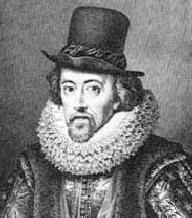 Francis
Bacon (1561-1626) Francis
Bacon (1561-1626)
Bacon is often considered the
first expounder of the "scientific" method of arriving at Truth – giving
the method a legitimacy as an alternative to religious truth.
His approach was empirical – collecting
bodies of actual observations or data and then bringing them under the
careful study of a community of scholars. He led scholarship away
from both the Aristotelian and Platonist schools that had long been prevalent
in Europe. He was opposed to the quickness by which the human mind
likes to jump to generalities (both Aristotelians and Platonists).
Instead he proposed to work from the hard facts and let them suggest their
own theoretical order – at the same time barraging such theories with doubts
and constant testing to see at what point they might not hold. In
this he was laying the foundations of empiricism – which would take a strong
hold over the English scholarly mind.
Bacon was a bridge between
the traditional religious worldview and the newly arising secularist worldview.
He acknowledged the importance of both, proposing that science and theology
were two separate enterprises because of two different systems of proof
required by each: direct observation and divine revelation. (Yet – to Bacon,
theology still remained the primary enterprise of the two!)
 Bacon's
major works or writings: Bacon's
major works or writings:
The Essays
The New Atlantis
The Advancement of
Learning 1605)
Novum Organum
(1620)
William
Harvey (1578-1657)
 Harvey's
major works or writings: Harvey's
major works or writings:
On the Motion
of the Heart and Blood in Animals (1628)
|
|
ASTRONOMY DETHRONES THE EARTH –
AND THE HEAVENS
(Early 1500s to Early 1600s) |
Nicolas
Copernicus (1473-1543)

In the mid 1500s Nicholas Copernicus
(Nikolai Kopernik) proposed a startling theory, one that supposed the sun – not
the earth – was the center of the universe (he apparently was not aware
that almost 2000 before him, Aristarchus had also come up with such a theory).
His purpose (so his publisher
claimed in the preface to Copernicus'
On the Revolution of the Celestial
Spheres, published in 1543 just after Copernicus' death) was not to
challenge the obvious truth of the earth's centrality to the universe – but
rather to make astrological calculations (for the purpose of fortune-telling)
less complicated. His heliocentric (sun-centered) theory was
simply to be viewed as a hypothetical system designed to simplify astrology.
Thus he did not intend to posit this theory as a new theory of Truth or
Reality. It was simply a device of convenience. Or so his publisher
said.
Indeed, though Copernicus'
system seemed to "work," it still had many flaws of its own – and needed
a lot of further refinement before it might be significantly better than
Ptolemy's. The principle flaw was that Copernicus, though bold in
his proposal to make the sun the center of orbiting planets, such as the
earth, held to the traditional ancient Aristotelian view that these orbits
formed "celestially perfect" circles. Consequently Copernicus's system
still needed theories and formulas and sub-theories and sub-formulas (epicycles)
to make his astrological calculations useful – in the same manner as Ptolemy's
convoluted system.
Thus we often talk about
Copernicus' "revolution." In his own days there was nothing particularly
revolutionary about his theories. But he had put out in front of
the European mind the suggestion that the sun, not the earth, might be
a better starting point in computing the movements of the heavens.
His ideas were not forgotten.
 Copernicus'
major works or writings: Copernicus'
major works or writings:
On the Revolution
of the Celestial Spheres (1543)
Dedication
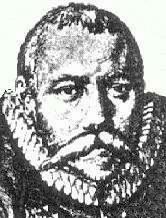 Tycho
Brahe (1546-1601) Tycho
Brahe (1546-1601)
At the turn of that century
(late 1500s/early 1600s) Tycho Brahe made an enormous contribution to the
growing field of inquiry about the universe and the place of our world
in it. He was astrologer and mathematician for the Holy Roman Emperor.
In pursuit of astrology, he carefully collected very exact observations
about the movement of the heavens.
Though these were not intended
at the time to serve the interest of science, such as we understand the
term today, they would prove very useful for later advances in the rising
science of astronomy (studying the planets and stars in order to acquire
knowledge of their movements in and of themselves – quite apart from their
"fortune-telling" qualities). They were a wonderful source of empirical
data which others could draw on to confirm their theories about the movements
of the heavens (his data were used extensively by Kepler in the latter's
development of the elliptical theory of the solar orbits).
 Brahe'
major works or writings: Brahe'
major works or writings:
Astronomiae
instauratae mechanica (ca.1598 - 1602)
Galileo
Galilei (1564-1642)
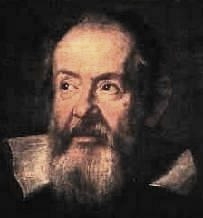
It was when the cause of explaining
the movement of the heavens came into the hands of Galileo Galilei that
the heliocentric theory of the universe finally became the revolutionary
bombshell that rocked the medieval worldview.
It was in the early 1600s
that the Italian astronomer Galileo Galilei made his dramatic announcement.
He claimed that from his direct observations of the stars, it was
clear to him that Copernicus' theory was not just a matter of intellectual
convenience, but was in fact also the Truth. Indeed, the sun – not
the earth – was the center of things.
His impact did not stop there.
Galileo had been armed with a new-fangled instrument we know as a telescope
(even claiming its invention – though it seems he fudged a bit on this truth).
With this telescope he was able to make many unprecedented observations
of the heavens beyond even the all-important fact of the earth's loss of
central position in the scheme of things. He observed the pock-marked
surface of the moon and the solar flares of the sun – discounting the ancient
Greek religious doctrine that these heavenly bodies were the epitome of
perfection (actual Platonic Ideals or Forms).
He also observed the moons
of Jupiter in their regular orbit as together they all moved about the
sun – giving rise to an explanation of how our moon could be similarly held
in orbit around the earth as it makes its way around the sun.
Also his telescope revealed
considerable mass on the part of some of the heavenly bodies (the planets)
which had appeared to the naked eye only as points of light in the sky,
demonstrating their existence as substantial material entities: neighbors
of the earth. But oddly, even under the powerful scrutiny of the telescope,
other lights in the heavens (the stars) still remained as only points of
light – giving indication that their distance from our earth must be vastly
greater than had been previously imagined!
At first his announcements
were met with much interest from the Italian authorities – who seemed initially
to be quite supportive of his studies. But Galileo was a bit of a
publicity hound – who found that his celebrity status could be greatly enhanced
by clobbering the church with the metaphysical implications of his discoveries.
In case people had not understood the metaphysical implications of his
findings he was glad to make them clear. Thus we was loud in his
announcement that both tradition and Scripture – hitherto considered the
bedrock of all truth – seemed to be very wrong on their placement of the
earth at the center of the universal scheme of things. Indeed, he
seemed to be eager to demonstrate every point he could find where his studies
challenged traditional authority.
Being the early 1600s when
he made his announcement (in the midst of the Protestant-Catholic religious
wars), the church was very sensitive to criticisms of its traditional authority.
A show-down between Galileo and the church was inevitable – given Galileo's
personality and the church's highly defensive position. The world
remembers vividly the scene in which Galileo was forced to choose between
his theories and his position in Catholic Italy. It's famed as an
example of the ignorance of the church – and the suffering of those who
would raise the Truth against such ignorance. Actually the matter
could have been handled more positively if Galileo had been less set on
becoming such a celebrity.
But in the end – he had his
way: as the spokesman for science he became the greater hero.
And of course science found that as a result of Galileo's theatrics it
jumped itself ahead of all other authority. Indeed, science has long
been familiar with the art of showmanship!

 Galileo's
major works or writings: Galileo's
major works or writings:
The Messenger
of the Stars (1610)
The Assayer
(1623)
Concerning the Two
Chief World Systems (1632)
Concerning Two New
Sciences (1638)
Johannes
Kepler (1571-1630)
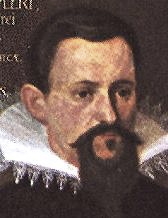
However, because Galileo had
built his sun-centered theory on the notion of circular paths of
the planets around the sun (the paths are in fact elliptical, not circular)
his calculations were flawed – a fact which many were quick to jump on as
proof of the basic falseness of his theory.
But very soon after Galileo's
grand splash upon the European stage, his work was soon (also the early
1600s) backed up by further studies by Johannes Kepler. Kepler succeeded
Brahe as astrologer and mathematician for the Emperor. As such, he
had studied the heavens in search for a more rationally "beautiful" explanation
of the movement of the heavens.
However, Kepler came at this
work from a quite different angle than Galileo. To Kepler, his work
was an almost mystical (Pythagorean) enterprise. Unlike Galileo,
who sought (in the vein of the modern mindset) to exalt himself as the
heroic intellectual explorer, Kepler sought to glorify God with his work.
To him science was there to validate God – not man. That attitude
would change in the generations ahead, however.
Kepler employed Brahe's data
to refine Copernicus' heliocentric theory. In an amazing departure
from long-held conventional thinking, he put the
circular theory
of the movements of the planets aside. In its place he substituted
the amazing theory that the planets move in eliptical orbits around the
sun, in precise and mathematically simple relations to the sun. In
doing so, he cleared away all the unresolved details of Galileo's (or Copernicus's)
heliocentric theory.
The simplicity and accuracy
of Kepler's theory was now too compelling to be put aside by any religious
authority: He was too obviously giving accurate description to a
physical reality – and not just a "useful" theory for making astrological
calculations. The Christian world was going to have to come to terms
with Kepler's science. It was no longer going to do simply to point
to the authority of Scripture on the subject. Science was moving
into a position of authority all its own. It was now going
to be up to Christianity to figure out how to handle this newly emerging
intellectual authority.
 Kepler's
major works or writings: Kepler's
major works or writings:
Mysterium
Cosmographica (1597)
Astronomia Nova
(1609)
The Harmonies of the
World (1609?)
Epitome of Copernican
Astronomy
|
|
EARLY EFFORTS AT REFORM OF THE CHURCH
(1350 to 1500) |
John Wycliff
(1320-1384)
At Oxford university (where
he was master of Baliol College), John Wycliff by 1369-1370 was stirring
up major controversy in teaching/publishing concerning the freedom of religious
conscience of the individual believer, who in Wycliff's eyes stood through
faith directly before God (bypassing the priest as a necessary intermediary
between the believer and God). He also attacked a multitude of practices
and features of the church – especially its wealth which he felt should
be confiscated and turned over to the nation so that the clerics could
live on the same economic scale as the people they ministered to.
He even advised ecclesiastical poverty.
Wycliff further spread the
controversy by writing his tracts in English rather than Latin – making
his pronouncements more widely accessible – and popular. In these
tracts he sharply attacked the practices that had grown up in the church
that in no ways were part of the faith that Jesus Christ had established
in the first century.
It was an easy step from
calling for equality of all before God in religious matters to equality
of all before God in political and economic matters as well. Thus
his teachings came to be associated by both his supporters and his detractors
with the Peasants' Revolt which broke out in 1351 after the Great Death.
This had wiped out half of England's supply of cheap peasant labor and
thus led to the passage of a number of English laws which locked the remaining
peasants into very fixed working conditions, deepening their enserfment.
They were furious. It wasn't fair – as God himself was their true
judge. In the end they were accountable in the consciences to God
alone. So their thinking went. And Wycliff's teachings only
seemed to encourage such thinking.
On this supposed association
with the Peasants' Revolt, heresy charges were brought against Wycliff
by the clergy. His works were burned and the intellectual ferment
that existed at Oxford was suppressed.
Nonetheless just prior to
his death in 1384 he had inspired an English translation of the Bible (an
unheard of event) – which put scripture in the hands and hearts of the common
Englishmen, especially of his followers. This translations was widely
copied and distributed – despite the efforts of the clergy to suppress this
work.
What Wycliff had done was
to encourage the notion that the Word of God in Scripture was what was
truly authoritative for the belief and actions of the true Christian – not
the traditions and pronouncements of the church (which was becoming widely
viewed as a very venal institution).
Wycliff's followers (after
his death), contemptuously called "Lollards," from a Dutch word of derision
meaning "mumblers" (originally directed at the Beguines), continued to
preach reform in England. Wycliff's Lollard movement was eventually
suppressed – but so was the intellectual ferment of Oxford university where
his teachings had been widely accepted.
Council
of Pisa (1409)
The institutional church was
trying to unify and reform itself – in particular end the political standoff
between the Italian and the French partisans in the church's leadership.
At the same time bring independent voices of reform under submission – through
the conciliar movement, a series of church councils called to unify the
papacy and reform the church. There were deep fears among ecclesiastics
that if reform did not happen soon, the church was going to lose forever
the affections of its people.
The Council of Pisa, in order
to end the embarrassment of having two contending popes claiming to be
the sole head of the Catholic church, deposed the two contenders, Gregory
XII and Benedict XIII. This reform was undertaken even by the cardinals
of both popes – who elected a new pope, Alexander V. But when the
two popes, backed by their respective national interest groups, refused
to step down, there were then three contending popes!
John
(or Jan) Huss (1374-1415)
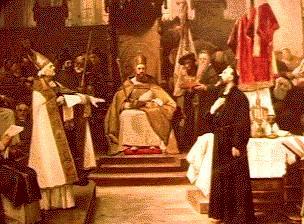
Wycliff's teachings reached
Bohemia after his death and were picked up by John Huss, Dean of the Faculty
of Philosophy and then Rector at the University of Prague in the early
1400s. Huss translated Wycliff's works into Czech and gave life to
the reform ideals to the people. He also inspired the political interests
of the Slavic Czechs who chafed under German political and ecclesiastical
dominion. This in turn stirred fear in the hearts of both church
and state officialdom in Bohemia. Thus in 1411 Huss was excommunicated
from the church and in 1412 placed under a strict ban.
In 1414 the ban on Huss was
lifted and he was called (under the Emperor Sigismund's promise of safe
conduct) to the Council (now meeting at Constance in Switzerland) to explain
himself. In particular the Council wanted to hear him out on his
claim that the only true pontiff of the Church was Jesus Christ.
But the response of the Council to his explanations was to have him arrested.
The Emperor demanded his
release and sent an army to the Council ostensibly to release Huss.
However he was not released and the Emperor then turned his efforts to
having Pope John XXIII condemned on a number of charges. Pope John
fled. The other two papal contenders were also deposed – and Martin
V (Italian) was elected as the sole pope. Thus was the unity of the
Holy See was reestablished.
Sigismund, who was more interested
in preserving the unity rather than the purity of the church, then agreed
to let the Council decide the fate of Huss – despite his earlier guarantee
of safe conduct. The Council found him guilty of some 30 charges
and turned him over to the secular authorities to be burned at the stake
as a heritic. In July 1415 he was put to death as ordered and his
ashes were scattered over the Rhine River.
When news reached Bohemia
of what had happened at Constance, revolt broke out. The ideals proclaimed
by the leaders of the revolt (notably John Ziska) were the same as those
that had undergirded Wycliff's movment in England: freedom from religious,
economic and political oppression.
Several attempts to put down
what had become a popular national revolt failed. Finally a compromise,
supported by Emperor Sigismund, was reached between the church Council
and the Hussites in 1431: the
Compacts of Prague.
Council
of Basel (1431-1449)
The council initially made progress
toward reconciliation with the Hussites. It defied a papal order to move
to Bologna, claiming superior authority to that of the pope (Eugenius IV:
1431-1447).
But its subsequent efforts
at reform of the ecclesiastical hierarchy caused it to overstep its true
power – and Eugenius used this to his own advantage. Also, the pressing
problems of the Turks and the need for closer relations with the Eastern
church, provided the occasion for the pope to split the council's power
bringing a portion of the council to Ferrara while the remainder carried
on in Basel. Its decision in 1439 to elect a pope in opposition to Eugenius
undermined most of the council's residual authority. In the meanwhile,
the papacy in Rome emerged as an ever-stricter defender of its ecclesiastical
authority.
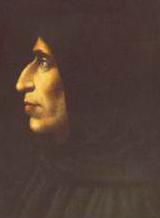 Girolamo
Savonarola (1452-1498) Girolamo
Savonarola (1452-1498)
Savonarola was an apocalyptic
Dominican monk-preacher who was both a very popular figure among the poorer
classes of Florence and a thorn in the side of the Florentine aristocracy
and the Roman church. He led a grand effort to clean up the morals of Florentine
society. But eventually the populace was turned against his influence and
he was hanged and burned in Florence in 1498.
|
|
THE FIRST GENERATION
OF PROTESTANT REFORMERS
(1517 to 1530) |
Martin
Luther (1483-1546)
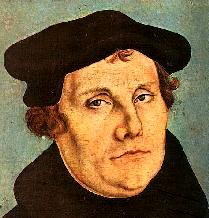 The explosion finally came around
the matter of the financing of the lavish building program of Saint Peter's
Basilica in Rome. As a somewhat unintended spokesman for this critical
mindset, in 1517 Luther posted his 95 theses on the door of the Wittenburg
castle church protesting, for theological reasons, the sale of indulgences
to finance the pope's schemes. The explosion finally came around
the matter of the financing of the lavish building program of Saint Peter's
Basilica in Rome. As a somewhat unintended spokesman for this critical
mindset, in 1517 Luther posted his 95 theses on the door of the Wittenburg
castle church protesting, for theological reasons, the sale of indulgences
to finance the pope's schemes.
Behind this defiant action
was a long personal pilgrimage of Luther, one based on an deep desire to
unburden himself of a profound sense of guilt and personal condemnation
before God's judgment. For Luther, a personal breakthrough occurred
as the message sank into the head of this Augustinian professor concerning
Paul's teaching (Galatians and Romans) about divine grace and forgiveness
received through the simple faith of the believer – and not through the
demands of any religious law or requirements of a religious system.
So "liberated" was he that he felt that his discovery had to be brought
to the world.
The occasion of the sale
of indulgences brought this desire to the fore. With this action of challenging
papal authority, Luther, unaware of where this would eventually take him,
uncorked an explosive force among fiercely faithful Christians. It
also excited the political interests of the German princes who saw in this
theological revolution an economic/political opportunity they could not
pass up.
For Luther the reform movement
was related to the matter of a sinner's personal justification before God.
Luther showed little interest in making broader changes within Christianity
beyond the throwing off of Roman spiritual authority – with its traditions
of works-righteousness. Substantial changes in worship, for instance,
were of lesser interest to Luther. Also the episcopal form of church
government (rule by bishops) was kept by Luther – though with the understanding
that the bishops were answerable to the local princes – not to Rome.
The pope's ability to reply
to Luther's challenge to ecclesiastical authority was greatly limited by
the protection that Frederick, imperial elector, placed around Luther.
Meanwhile, in Luther's debates with the papal opponents sent to silence
him, he was gradually drawn more deeply into a position defiant of Rome.
By 1520, Luther's defiance of Rome was total. To Luther, Rome was
the anti-Christ. At the end of that year Luther boldly and publicly
burned the papal bull requiring his submission. Luther, and much
of Germany with him, was in full religious rebellion against Rome.
The newly elected Holy Roman
Emperor, Charles V (ruler of: powerful Spain and its wealthy American colonies,
the commercially energetic Netherlands, and Austria and much of Italy),
now took up the issue on the side of the Roman church. Luther, now excommunicated
but still under the protection of Frederick and widely popular in Germany,
was called by the Emperor to an Imperial Council at Worms to give account
of his views. Here Luther stood firm in his views against the Roman
church. Under an Imperial guarantee of his freedom, Luther was able to
get away from the Council before the guarantee was retracted. From
then on for the rest of his life, Luther remained in seculsion – publishing
works against the papacy and bringing forth his German translation of the
Bible.
In the meanwhile the Emperor
found himself preoccupied by an on-going war with France over control of
various cities and principalities in Italy. Thus the Emperor was seriously
distracted in his effort to quiet Luther. Then the Turkish military
threat to the Emperor's Austrian holdings rose up again. Thus with the
Emperor preoccupied elsewhere, Luther was relatively safe.
But events took an unexpected
turn when in 1524-1525 German peasants, in the name of their new freedom
of conscience, rose up in rebellion against their feudal lords. Luther
sided with the lords against the peasant "hordes." These pitiful
peasant rebels were cruelly crushed.
The result of the Peasant
War was to move real power over to the various German princes. Thus
in Germany, the rule of the church was not a matter either of local congregational
power – nor of the power of popes and bishops. Rather, it was the
ruling prince in each of the many principalities that made up Germany who
determined each in his own territory its particular Christian character.
Some remained loyal to Rome (the southern German princes), some followed
the Lutheran line (the northern German princes). But in any case
it was the local princes who made that determination. The dependence
of church on state was thus set as the characteristic feature of German
Christianity – a feature lasting down into the 20th century.
 Luther's
major works or writings: Luther's
major works or writings:
The
Ninety-Five Theses
The Smalcald Articles
On Good Works
(1520)
To the Christian Nobility
of the German Nation (1520)
Babylonian Captivity
of the Church (1520)
The Freedom of a Christian
(1520)
Order of Public Worship
(1523)
Against the Robbing
and Murdering Hordes of Peasants (1525)
The Smaller Catechism
The Larger Catechism
Andreas
Rudolf Bodenstein von Karlstadt (c. 1480-1541)
A professor at Wittenburg and
originally a supporter of Luther – who himself was put under papal threat
along with Luther in the first days of the Reformation. But
he was truly more radical than Luther in his vision of reform – even at
one point calling on the renunciation all signs of status, in the church
and in society (including university degrees). His themes were later
picked up by the radical Anabaptists in the unsuccessful Peasants' Revolt.
Though Luther and Karlstadt differed strongly on a number of matters including
not only the political structuring of the new church but also the significance
of Holy Communion – Luther took his old friend in when he was close to being
captured by hostile political authorities. He later moved on to Basel
(Switzerland) and backtracked on many of his earlier radical positions.
In fact he now became a determined advocate of extensive university education
of all Protestant leaders. He died in 1541 during an outbreak of
the plague.
 Karlstadt's
major works or writings: Karlstadt's
major works or writings:
Von Abtuhung
der Bylder (On the Rejection of Images) (1522)
Ob man gemach faren
soll ("Shall We Go Slowly?")
Thomas
Müntzer (c. 1490-1525)
Müntzer
was the active leader of the unsuccessful Peasants' Revolt in Thuringia
(1524-1525). He took a mystical view about the humble classes being the
true repository of God's Spirit and the proper instrument of God's transformative
work on earth. His theological writings and personal leadership
were critical in the peasants' revolt against the German ruling classes.
At the Battle of Frankenhausen in May of 1525 his peasant forces were defeated,
he was taken prisoner, and executed.
 Müntzer's
major works or writings: Müntzer's
major works or writings:
German
Church Office
German-Protestant
Mass
Protestation
or Defense . . .
Regarding
the Beginning of the True Christian Faith and Baptism
Of
Written Faith
Precise
Exposure of False Belief
Ulrich
Zwingli (1484-1531)
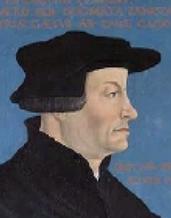
As a young man he received a
humanistic university education in Vienna and Basel. As a parish priest
he continued his studies in Greek and Hebrew and of the humanist Erasmus
and the classics. In 1518 he was brought to Zurich as its pastor
where he gained reputation as a brilliant preacher and scholar.
His inquiring mind also began
to draw him toward Luther's reform movement. In 1522 Zwingli began
to make his moves to establish Scripture as the sole religious authority
for the Christian. He opposed the Lenten Fast, citing the lack of
Scriptural warrant for the practice – a position which was supported by
the Zurich civil government. The bishop of Constance tried to suppress
this innovation, but lost out to the Zurich government which moved to take
control of ecclesiastical matters within its jurisdiction. Zwingli
supported this shift in authority, claiming that the civil government,
under the Lordship of Christ and guided in its work by the dictates of
Scripture, was the legitimate voice or conscience of the believing community.
He also moved to reform various
features of worship, whenever there was no specific Scriptural warrant
for such things, though he did so through a practice of gradualism.
By 1525, however, he had eliminated statues and relics from the Zurich
church, eliminated the Latin mass (substituting a memorial celebration
of the Lord's Supper in its place) and placed at the heart of worship the
sermon (an exposition of Scripture) – the key feature of the Swiss Reformation.
But the conservative rural
cantons of Switzerland remained firmly opposed to the Zwinglian reforms.
Relations grew bitter and hostilities resulted – with Zwingli himself being
wounded and then put to death in a losing battle against the rural cantons
in 1531.
 Zwingli's
major works or writings: Zwingli's
major works or writings:
Commentary
of True and False Religion (1528)
Oecolampadius
Meanwhile the Reformation began
to spread to other parts of Switzerland: most notably to the cities of
Basel (where Oecolampadius had been leading the reform movement), Constance
and Bern.
Martin
Bucer (Butzer) (1491-1551)
The reform movement also made
its way down the Rhine River to Strasbourg – where under the leadership
of Zell, Capito and Bucer the reform movement took on the more thoroughgoing
Swiss character (as distinct from the more conservative Lutheran variety).
|
|
THE NEXT GENERATION OF REFORMERS |
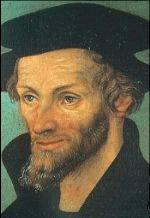 Philip
Melanchthon (1497-1560) Philip
Melanchthon (1497-1560)
The successor to Luther's church
reform movement in Germany.
 Melanchthon's
major works or writings: Melanchthon's
major works or writings:
Augsburg Confession
(1530)
The Life and Acts
of Martin Luther (1549)
Heinrich
Bullinger (1504-1575)
A more gentle-natured Heinrich
Bullinger took over the church reform movement in Zurich after Zwingli
was killed..
 Bullinger's
major works or writings: Bullinger's
major works or writings:
The Second
Helvetic Formula
John
Calvin (1509-1564)
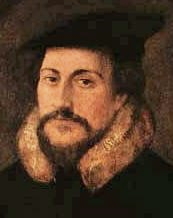
A Frenchman, schooled in the
new humanist tradition and prepared at the university to be a lawyer. He
fell in with a circle of French humanists who read with great interest
the writings of Luther.
Then, somewhere in the period
1532-1534 Calvin experienced a "sudden conversion" (the details of which
unfortunately he never discussed publicly.) From this point on his
well organized mind was given over to theology rather than the law.
At the same time his theological
associations became very dangerous to an increasingly suspicious French
king, Francis I.
In 1536, Calvin felt compelled
to write, with all respect to his monarch, a reply to Francis' suspicions
about the "protestants": The Institutes of the Christian Religion.
It was Calvin's hope that Francis, through this long essay, would come
to understand that the protestants posed no threat to his rule – but only
sought to revitalize the original Christian ideal on which the whole Christian
realm ought to be properly based.
Though it was the most compelling
theological treatise explaining the protestant position – it did not have
its intended effect of swaying the views of Francis.
Calvin was compelled to leave
France – arriving in the summer of 1536 at Geneva, where the protestant
reformer Farel prevailed upon Calvin to stay in the city and help him with
the reformed movement which was growing rapidly there. But for Calvin,
this proved to be a stormy proposition. Geneva was an unruly city,
and Calvin's natural bent toward orderliness and discipline made him many
enemies in the city. In the spring of 1538 Calvin and Farel were
both banished from Geneva.
Calvin made his way to Bucer's
Strasbourg where he spent a happy three years, marrying and helping out
with the reformed movement there. He wrote a revised edition of his
Institutes
and began his very important series of biblical commentaries with his study
of Romans.
But in 1541, the old group
partisan to Calvin urgently requested his return to Geneva. Calvin
somewhat reluctantly decided to make his return – but on his terms.
Upon his return, Calvin organized
(accepting many compromises with the city Council) the religious life of
the city around his new Ordinances – the foundation of "Reformed"
polity. He also founded there a training school for protestant (i.e.,
"Reformed") theologians, which would in time become the University of Geneva.

 Calvin's
major works or writings: Calvin's
major works or writings:
Institutes
of the Christian Religion
On the Christian Life
The Necessity of Reforming
the Church (1543)
Commentaries
|
|
Thomas
Cranmer (1489-1556)
English reformer
John
Knox (c. 1514-1572)

John Knox is the great Protestant
reformer of Scotland who not only brought Scotland to Presbyterianism in
the mid 1500s, but also left a legacy that was key to shaping not only
Presbyterian ("Reformed") Protestantism but also representative democracy
in the American middle colonies (from New Jersey to South Carolina) in
the 1600s and 1700s.
As with many Protestant reformers,
Knox began as a Catholic priest, highly discontent with the moral and spiritual
corruption that had overtaken the Mother Church. He was attracted
to the Lutheran teachings of the early Scottish reformer, George Wishart;
was appalled when in 1546 the Catholic cardinal had Wishart burned at the
stake as a heretic; and then joined the group of rebels who moved to overthrow
the hand of the Catholic church over Scotland. This put him in opposition
to the pro-French party that ruled Scotland – and when French troops in
1547 crushed this Protestant rebellion in Scotland, Knox was led off
to captivity as a French galley slave. His release was finally secured
by the pro-Protestant English King Edward VI, leading Knox to come to England
to be a Protestant pastor and then chaplain to the King.
But when Edward died in 1553
and Catholic Mary Tudor ("Bloody Mary") came to the throne, Knox left England
and made his way eventually to Geneva Switzerland where he joined a community
of English expatriates living and studying under the direction of the great
Genevan reformer, John Calvin. Knox took a great liking to both Calvin
and his teachings and subsequently became a major voice in the English/Scottish
reform movement not only in Geneva, but through letters, to a growing Protestant
movement back in Scotland.
He returned briefly to Scotland
in 1555, became pastor of the English church in Geneva, and then finally
in 1559 he returned definitively to Scotland to take over the spiritual
leadership of the Protestant rebellion against the French-Catholic regent
of Scotland, Mary of Guise. Seeing that things were not going well
in Scotland for the Protestant party, Queen Elizabeth of England came to
their aid against the French in Scotland. But when Mary of Guise
died suddenly in 1560, the French Catholic cause in Scotland was dead.
Scotland was now won for Protestantism.
At this point Knox and his
supporters began to reshape the Scottish church – not only theologically
along the lines of Calvin's Reformed Faith born in Geneva, but also politically
in a way that was Knox's special contribution to the Protestant cause.
Knox took the idea of representative government characteristic of Calvin's
reformed churches (communities lead by elected elders or "presbyters"),
and applied it locally, regionally and nationally in total reversal of
the top-down or hierarchical fashion of Catholic or "episcopalian" government.
Thus local councils ("Presbyteries"), regional councils ("Synods") and
national councils ("General Assemblies") that presided over the faithful
were made up of representatives not of the political rulers over the church
but of the people themselves. Thus was born "Presbyterian" or representative
church government – the source of inspiration for the new Democratic or
Republican forms of government that led eventually to the Constitution
of 1789 underpinning the new American Republic.
Despite success in the Protestant
takeover of the church Scotland, the continuing existence of a Catholic
monarchy in Scotland under Mary of Guise's daughter, Mary Queen of Scots,
made life still highly problematic for Protestant Scotland – and for John
Knox personally as the two locked wills in on-going battle. But eventually
Mary's poor diplomacy proved to be her undoing and in 1567 she was forced
to flee to England, where Elizabeth put her under house arrest, where she
remained for the rest of her life.
In any case Knox, worn out
and sickly, died from his labors in 1572. But his work in Scotland
was carried forth faithfully by others, notably Andrew Melville.

 Knox's
major works or writings: Knox's
major works or writings:
“Faithful Admonition”
(1554)
"First Blast of the Trumpet
against the Monstrous Regiment of Women," (1558)
Scots Confession
(1560)
Book of Discipline
(1561)
Book of Common Order
(1564)
History of the Reformation
in Scotland, (1564 – though not published until 1584, after his
death)
An Answer to a Scottish
Jesuit (1572)
Menno
Simmons (1496-1561)
founder of the Mennonites

Theodore
Beza (1519-1605)
Calvin's successor in Geneva
 Beza's
major works or writings: Beza's
major works or writings:
Confession
of the Christian Faith (1560)
|
|
THE CATHOLIC COUNTER-REFORMATION
(1540 to 1600) |
Ximenes
de Cineros
Confessor of Queen Isabella
and Grand Inquisitor of Spain during the late 1400s. An early Spanish
reformer, tightening up the moral discipline of the church in Spain:
brought the religious orders under royal authority, brought discipline
to the monasteries, pushed the clergy to study Scripture more closely,
and founded the university of Alcala (1498).
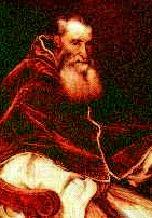
Pope
Paul III (1468-1549)
Pope, 1534-1549
Gasparo
Contarini (1483-1542)
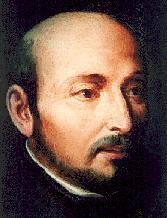
Ignatius
Loyola (Don Ieigo Lopez de Recalde) (1491-1556)
Ignatius was the founder of
the Society of Jesus (Jesuits), a religious order – organized along military
lines – of highly educated priests devoted to service to the Vatican, even
personally to the Pope himself.
 Ignatius'
major works or writings: Ignatius'
major works or writings:
Spiritual
Exercises
Robert
Bellarmine (1542-1621)
 Bellarmine's
major works or writings: Bellarmine's
major works or writings:
Disputationes
de controversiis Christianae fidei adversus huius temporis haereticos(1586-1593)
(Lectures
on the Controversies of the Christian Faith Against the
Heretics of This
Time)
De Potestate Summi
Pontificis in Rebus Temporalibus (1610)
(Concerning
the Power of the Supreme Pontiff in Temporal Matters),
|
|
REFORM IN ENGLAND
(Mid-1500s Onward) |
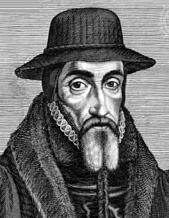
John
Foxe (1516-1587)
 Foxe's
major works or writings: Foxe's
major works or writings:
Commentarii
rerum in ecclesia gestarum (Commentaries on Affairs Within the Church)
(1554)
Ad inclytos ac praepotentes
Angliae proceres (To the Renowned and Powerful Nobles of
England) (1557).
Actes and Monuments
of these Latter and Perillous Dayes (The Book of Martyrs)
(1563)
An
Admonition to the Parliament (1572)
The major manifesto of the Puritans
published secretly in 1572. The official Anglican response to the
Admonition
was issued by John Whitgift, vice chancellor of the University of Cambridge.
In turn, Thomas Cartwright responded to Whitgift's comments. This
debate was put forth in a number of books published during this period.
Thomas
Cartwright (1535-1603)
English Puritan clergyman.
Professor at Cambridge and a widely acknowledged leader of the Puritans.
Richard
Hooker (1554-1600)
Anglican theologian – who took
a middle position between the Catholics and Calvinists. Master of
the Temple Church, 1585-1591. He attempted to answer the Admonition
with his own work, The Laws of Ecclesiastical Polity – a 5-volume
work which was still being expanded at the time of his death.
 Hooker's
major works or writings: Hooker's
major works or writings:
Of the lawes
of ecclesiasticall politie
William
Perkins (1558-1602)
English Puritan
Edward
Coke (1532-1634)
Coke was Chief Justice and Speaker
of Parliament and an outspoken defender of the primacy of that institution
as the foundation of true British government. For his troubles he
was removed from office by King James in 1616. But he would later
be brought back into the mainstream of British politics as the debate over
royal perogatives began to grow.
He carefully laid out a theory
or defense of government based purely upon the principle of ancient, time-honored
constitutional law – in distinction to one of divine rights, or of pure
might. He claimed that true law reached back to Anglo-Saxon times
when supposedly all men lived under a regime of Common Law – one which had
been deprived Englishmen by the Norman Conquest when English property and
human rights were taken over by Norman usurpers. It was the duty
of all Englishmen to restore these ancient laws and place government on
its true, legitimate footing – much as Englishmen had done in the days of
King John when they forced him to come under the rule of the Magna Carta.
That was Parliament's abiding task – to keep government under the law (as
Coke saw things).
 Coke's
major works or writings: Coke's
major works or writings:
Institutes
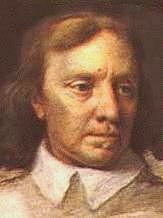
Oliver
Cromwell (1599-1658)
The
Westminster Confession of Faith
The Westminster Confession
of Faith
Richard
Mather (1596-1669)
Puritan minister in the Massachussetts
Bay Colony (Dorchester) in America. Barred from preaching in England,
he came to Massachussetts in the "great migration" of 1635.
He was co-author (with John
Eliot) of the Bay Psalm Book (1640).
He also introduced in 1662
the concept of the Half-Way Covenant, a much less rigorous set of
requirements for membership in the church. This permitted children of the
Puritan "saints" to join the church, even though they had not yet demonstrated
a visible "call" which was the only pathway to full membership. However
members brought into the church on the basis of the Half-Way covenant could
neither partake of the sacrament of the Lord's Supper nor could they vote
in church matters. This revived a lagging membership in the Congregational
church – yet kept power in the hands of the few venerable "saints."
James
Usher
Prepared the Irish Articles
of 1615
 Usher's
major works or writings: Usher's
major works or writings:
Body of Divinitie
John Wilkins
(1614-1672)
Oxford virtuosi; Puritan
theologian and natural scientist; Oliver Cromwell's brother-in-law.
 Wilkins'
major works or writings: Wilkins'
major works or writings:
A Discourse
Concerning a New Planet
Richard
Baxter (1615-1691)
 Baxter's
major works or writings: Baxter's
major works or writings:
The Saints'
Everlasting Rest
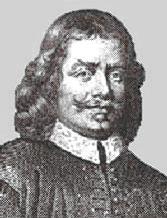
John
Bunyan (1628-1688)
English Puritan Spiritualist
 Bunyan's
major works or writings: Bunyan's
major works or writings:
Grace Abounding
to the Chief of Sinners (1666)
Pilgrim's Progress
(1678)
The Holy War
(1682)
John Flavel
(c. 1630-1691)
 Flavel's
major works or writings Flavel's
major works or writings
The Fountain
of Life opened up: or, A Display of Christ in his essential and
mediatorial
glory
The Method of Grace
in the Gospel Redemption
Christ Altogether
Lovely
On Keeping the Heart
Increase
Mather
A Puritan pastor and political
leader in the new Massachussetts Bay Colony in New England. He strived
to build in the new world the perfect, divine commonwealth on the basis
of true believers.
|
|
THE DEVELOPMENT
OF CONTINENTAL PROTESTANTISM
(Mid-1500s Onward) |
Jakob
Arminius (1560-1609)
Dutch Remonstrant
Synod
of Dort (1618-1619)
This synod
was called at the town of Dordrecht or Dort by leaders of the Dutch
Reformed church to decide on a response to the Remonstrance that followers
of Jacobus Arminius had presented to the Dutch government. This party
of Arminius, also called the Remonstrants, challenged some of the major
tennents of Calvinism, in particular the doctrine of predestination.
The Arminianists felt that salvation was at least in part a matter of the
free choosing of the individual.
The
Synod was widely attended not only by members of the Dutch Reformed Church
but also members of the English Reformed church (Puritans) and the German
and Swiss Reformed churches.
Realizing
immediately that the Synod was not going to give them a sympathetic hearing,
the Arminianists withdrew from the proceedings. Inevitably the final
canon or ruling of the Synod supported the predestinarian views of the
Calvinist majority, viz.: that salvation was extended to sinful people
solely as a matter of God's grace. This salvation was not for all
people but only for those sinners whom God had chosen for this blessing.
There was no resisting such a wondrous salvation – nor could such a salvation
be lost by human choice or error, for the whole matter belonged solely
to the sovereign will of God. Salvation could thus neither be gained
nor lost by human will.
Johannes
Cocceius (1603-1669)
professor in Franeker and Leyden
Cocceius continued the works
of Bullinger in developing covenant theology: the covenant of grace (Christ) – in
replacement of the covenant of works (Adam) which had stressed human responsibility
for the lapsed condition.
Francis
Turretin (1632-1687)
Genevan Scholastic-Calvinist
 Turretin's
major works or writings: Turretin's
major works or writings:
Institutio
Theologiae Elencticae (1674)
|
CONTINUING CATHOLIC PIETISM AND MYSTICISM
(Mid-1500s Onward) |
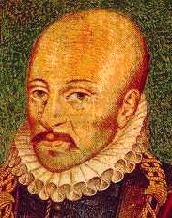 Michel
de Montaigne (1533-1592) Michel
de Montaigne (1533-1592)
Montaigne was born to a noble
family in the South of France (P?rigord) and was educated in Bordeaux,
eventually in the subject of law. His family and legal background
opened for him the doors to governmental service, as he first became a
city councillor and then mayor of Bordeaux.
He wrote short commentaries,
or "essays" (the term itself was his own!) on the people and events of
his day, with such insight into the human condition that these works were
widely noted by philosophers and writers of his time.
 Montaigne's
major works or writings: Montaigne's
major works or writings:
Es
sais (over the period 1572-1588)
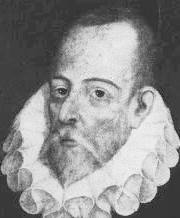
Miguel
de Cervantes Saavedra (1547-1616)
Cervantes depicted the strange
tensions between the pretensions of the aristocratic ideal and the wretched
economic reality which Spain lived under as it entered the 17th century.
 Cervante's
major works or writings: Cervante's
major works or writings:
Don Quixote
(1605)
12 Novelas Ejemplares
(1613)
Los Trabajos de Persiles
y Sigismunda (posthumously: 1617)
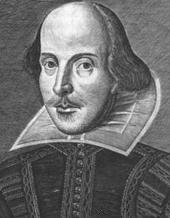
William
Shakespeare (1564 - 1616)
 Some
of Shakespear's major works or writings: Some
of Shakespear's major works or writings:
The
Comedy of Errors (1593)
King
Richard III (1593)
The Taming of the Shrew
(1594)
Romeo
and Juliet (1595)
A Midsummer Night's Dream
(1596)
The Merchant of Venice
(1597)
Much Ado about Nothing
(1599)
Julius
Caesar (1599)
The
Merry Wives of Windsor (1601)
Hamlet,
Prince of Denmark (1604)
Othello, The Moor of
Venice (1605)
King
Lear (1606)
Macbeth
(1606)
The Shakespearian Sonnets
Pedro
Fernandez Navarrete
An astute political observer
who stressed the danger to Spain posed by the heavy taxation of the commoners,
the greed of the landowners and the lavishness of the lifestyle of the
nobles and churchmen. The nobility added little value to the wealth
of the society. In fact the vagabond nobleman was coming to be held
up as a new ideal.
In Spain the gap between
the rich and the poor was widening rapidly. Harsh treatment of the
Jews and Muslims was also viewed by Navarrete as very harmful to the well-being
of the nation. The countryside was becoming depopulated – and Madrid
was grossly overcrowded as peasants escaped the economic hardships of the
countryside and came to the capital in hope of a better life. For
this same reason the ranks of the clergy were becoming swollen with new
members.
Furthermore, the wealth of
Castile was being rapidly depleted to meet the costs of Spain's international
involvements. Little wealth was returned to Castile for its contributions
to the Spanish empire – and Castille was was becoming the worst off economically
of the Spanish provinces.
 Navarrete's
major works or writings: Navarrete's
major works or writings:
Conservation
of Monarchies (1626)
|
|
THE RENAISSANCE AND REFORMATION: A FULL HISTORY |
 Miles
H. Hodges Miles
H. Hodges
| |


 The Renaissance
and Reformation: A Full
The Renaissance
and Reformation: A Full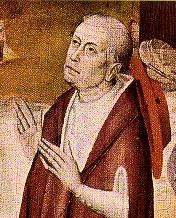
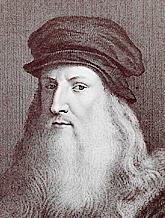
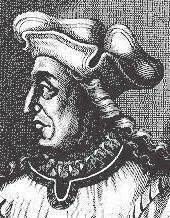
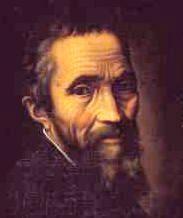
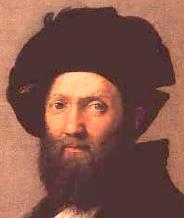
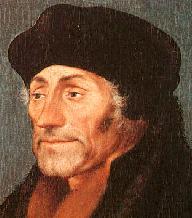
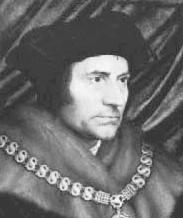


 Francis
Bacon (1561-1626)
Francis
Bacon (1561-1626)
 Tycho
Brahe (1546-1601)
Tycho
Brahe (1546-1601)



 Girolamo
Savonarola (1452-1498)
Girolamo
Savonarola (1452-1498)

 Philip
Melanchthon (1497-1560)
Philip
Melanchthon (1497-1560)







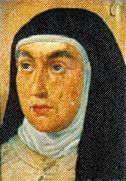
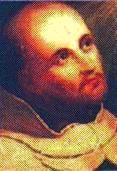
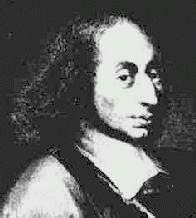
 Michel
de Montaigne (1533-1592)
Michel
de Montaigne (1533-1592)



